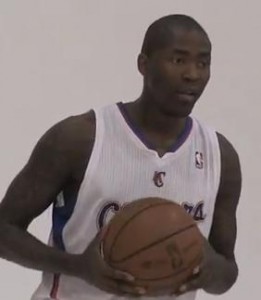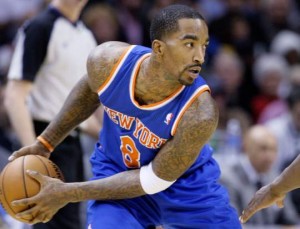 Basketball is a team game, but it is also a game that can easily be altered by a single player, moreso than any other major sport.
Basketball is a team game, but it is also a game that can easily be altered by a single player, moreso than any other major sport.
And that player doesn’t even have to be a starter.
In many games this season, there has been a fairly strong correlation between the success of the Los Angeles Clippers when Jamal Crawford is doing well – and when he isn’t. The same can be said for J.R. Smith in New York.
With two weeks in the regular season remaining, and the race for the Sixth Man Award heating up, Smith and Crawford will be relied on now more than they may have ever been in the past.
When the Clippers and Knicks both got off to hot starts in November and bolted to the top of their respective conferences, Smith and Crawford were noted as key offseason acquisitions that put their teams over the top.
The successes and failures of the Knicks are shockingly similar this season to the successes and failures of their stud sixth man. In wins, Smith has put up 17.8 points per game on nearly 44 percent shooting. In losses, it’s not as pretty. While he still puts up 17.3 points, his shooting drops below 38 percent.
man. In wins, Smith has put up 17.8 points per game on nearly 44 percent shooting. In losses, it’s not as pretty. While he still puts up 17.3 points, his shooting drops below 38 percent.
Smith also collects more rebounds and assists and commits less turnovers in New York’s wins. In other words, when Smith is simply chucking and missing, he hurts the Knicks. When he’s on and playing a more well-rounded game, he is a big factor in their success.
After a great start to the season, Smith cooled off. In January, Smith struggled and shot below 37 percent, and the Knicks went just 7-6.
New York is currently riding a 10-game winning streak, and Smith is a big reason why. He is averaging 23.3 points during the streak while shooting better than 50 percent (79-of-157) from the field. He also is shooting 7.8 free throws per game, more than double his season average.
Crawford’s differentials are not as extreme but are noticeable differences in Clippers wins and losses. He actually scores more in losses (17.2 points to 16.4) but does so putting up more shots and shooting at a lower percentage.
In wins, Crawford shoots 44.8 percent; in losses he drops to 42.8 percent. While not a dramatic difference, it is discernible.
March was a prime example. After a hot start of three straight 20-point performances, Crawford reached that mark only one more time and at times struggled to get himself going in Lob City’s offense. As a result, the Clippers were just 7-7 in March.
Both players are streaky scorers who can go off at any point in a game or during the season. Overall, Crawford has been a bit more steady, but Smith’s recent surge in the last six weeks has him back as a front-runner in the race for the NBA’s top bench player.
With that streakiness comes the ability to carry their teams on nights where their superstar teammates are off their games. But both Smith and Crawford have the ability to shoot their teams out of a game as quickly as they can shoot them into one.
Now, on to the rankings: